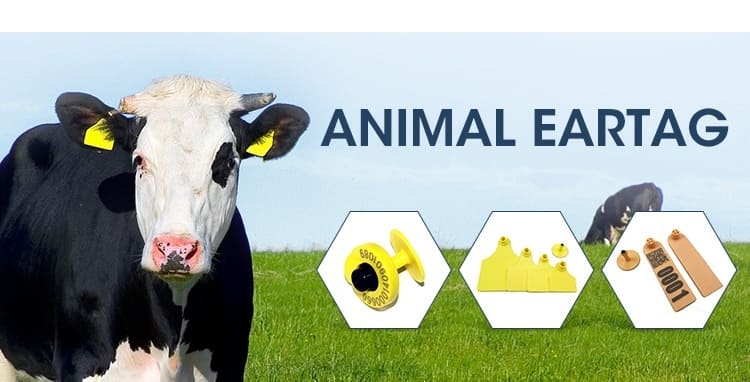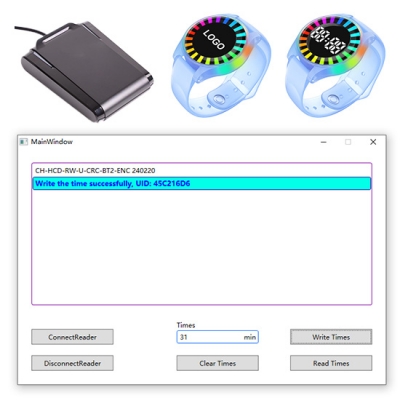تكمن أهمية تقنية تحديد الهوية بموجات الراديو (RFID) في عملية الوسم. تُجهّز الحيوانات بعلامات تحديد الهوية بموجات الراديو، وهي أجهزة إلكترونية مدمجة تحتوي على رموز تعريف فريدة. تُثبّت هذه العلامات بسلاسة، سواءً خارجيًا - مثل علامات الأذن RFID للماشية - أو تحت الجلد للحيوانات الأليفة، مما يتيح التعرف عليها بشكل مريح وآمن.

التفاعل بين علامات تتبع الحيوانات بتقنية RFID تُشكّل أجهزة قراءة RFID، سواءً كانت محمولة أو ثابتة، جوهر وظيفتها. تُصدر أجهزة قراءة RFID موجات راديوية للتفاعل مع البطاقات. عندما يقترب حيوان يحمل بطاقة RFID من جهاز قراءة، يلتقط النظام مُعرّف البطاقة المميز ويُعالجه بسرعة، مُحددًا بذلك موقع الحيوان بدقة في نظام التتبع.
يتجاوز تحديد الهوية مجرد التعريف، إذ يُمكّن تحديد الهوية بموجات الراديو (RFID) من إمكانيات متطورة لإدارة البيانات. تتكامل تدفقات البيانات المجمعة من قارئات تحديد الهوية بموجات الراديو بسلاسة مع قواعد بيانات مركزية، مما يُسهّل إجراء تحليلات معمقة لسلوكيات الحيوانات وحركاتها ومؤشرات صحتها، وغير ذلك الكثير. يُبشّر هذا المستودع المركزي بعصر جديد في اتخاذ القرارات المستنيرة لرعاية الحيوانات ورفاهيتها.
يُحقق دمج تقنية تحديد الهوية بموجات الراديو (RFID) مع تقنيات الأتمتة مكاسبَ كفاءةٍ غير مسبوقة. فمن خلال دمج تقنية تحديد الهوية بموجات الراديو (RFID) مع العمليات الآلية، مثل جداول التغذية وفرز الماشية، تشهد الصناعات عملياتٍ مُبسطةً وإنتاجيةً مُعززةً. ففي المزادات، على سبيل المثال، تُتيح تقنية تحديد الهوية بموجات الراديو (RFID) تتبعَ وإدارةَ فرز الماشية بسلاسة، مما يُسرّع المعاملات ويُحسّن سير العمل.
تتجاوز فوائد نظام تحديد الهوية بموجات الراديو (RFID) الكفاءة التشغيلية لتشمل إجراءات مراقبة وأمن مشددة. يراقب نظام تحديد الهوية بموجات الراديو (RFID) صحة الحيوانات بدقة من خلال تتبع أنظمة الأدوية بدقة، وضمان رعاية مثالية. علاوة على ذلك، تحمي بروتوكولات الأمان المتطورة من السرقة وحركة الحيوانات غير المصرح بها، مما يضمن أقصى درجات الحماية وراحة البال للقائمين على الرعاية.
على غرار الطرق التقليدية، تُحدث تقنية تحديد الهوية بموجات الراديو (RFID) نقلة نوعية في مجال تتبع الحيوانات. فدقتها، ووضوحها الفوري، ودقة بياناتها تتفوق على حفظ السجلات اليدوي أو التعريفات البصرية، مما يُرسي معيارًا جديدًا للموثوقية والفعالية.

تجدر الإشارة إلى دور تقنية تحديد الترددات الراديوية (RFID) في دفع عجلة الأبحاث الرائدة وجهود الحفاظ على البيئة. ففي مجال الحياة البرية، تُسجِّل مصفوفات تحديد الترددات الراديوية (RFID) بدقة هجرات الحيوانات وسلوكياتها وتفاعلاتها مع موائلها، مما يُسهم في فهمٍ جوهريٍّ لديناميكيات السكان وأنماط الهجرة والتوازن البيئي، وهو أمرٌ حيويٌّ لجهود الحفاظ على البيئة.














